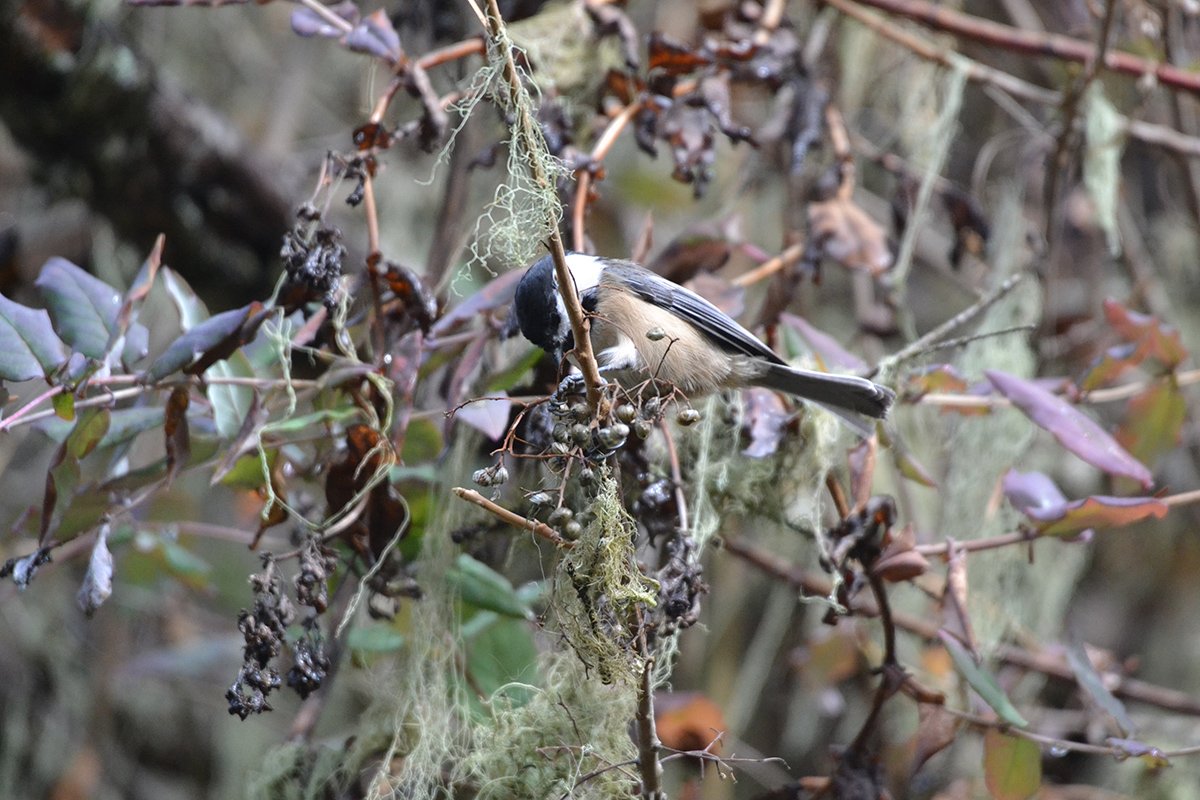One of the biggest hazards to the health and safety of birds is windows. The estimated number of birds killed every year by striking a window is 365 million to 1 billion.
Birds are unable to see the glass in the window as a solid object. In addition, the glass acts as a mirror. The reflection makes it appear that the surrounding sky and landscape continue.
The White Oak Pavilion at the arboretum was constructed with many windows to be able to connect with the surrounding landscape. To help deter birds from colliding with the windows, the arboretum decided to install vertical nylon cords to give birds the visual cue that it isn’t an open landscape. The cords are spaced out close enough to keep birds from flying through them. I have already seen chickadees land on the cord as they curiously poke around looking for food.
Lane County Audubon Society publishes a monthly newsletter called The Quail. In the November 2021 issue, Jim Maloney wrote a great article about the project at Mt. Pisgah to prevent bird collisions on the White Oak Pavilion. Click here to read it.
I am posting this now because migrating birds will soon be here. For some, Mt. Pisgah Arboretum is their destination. For others, it is a brief stopover to rest and fuel up before continuing on their journey. Birds can collide into windows year-round, but it happens more frequently during nesting season. Birds’ hormones become elevated as they start to establish and defend territories, find a mate, etc. So start thinking about installing a deterrent to window collisions, like the nylon cords. I’d like to give a shout-out to Karen in Minnesota. After visiting the arboretum, she decided to install something similar on the windows of her home. Way to go! The American Bird Conservancy has a list of resources to help to decide the best solution for you. Click here to check it out.
There are some informative and interesting articles about birds colliding with windows and research to prevent it. I have included links below to some of them.
Article on the All About Birds website by The Cornell Lab: “Glass Action: Advances In The Science Of Making Windows Safer For Birds, “ by Pat Leonard.
Article on the American Bird Conservancy website: “Birds Flying Into Windows? Truths About Birds & Glass Collisions From ABC Experts, “ by Christine Sheppard, Ph.D., and Bryan Lenz, Ph.D.
Article on the Audubon website: “Making Buildings Safe for Birds,” by Julie Leibach.











































